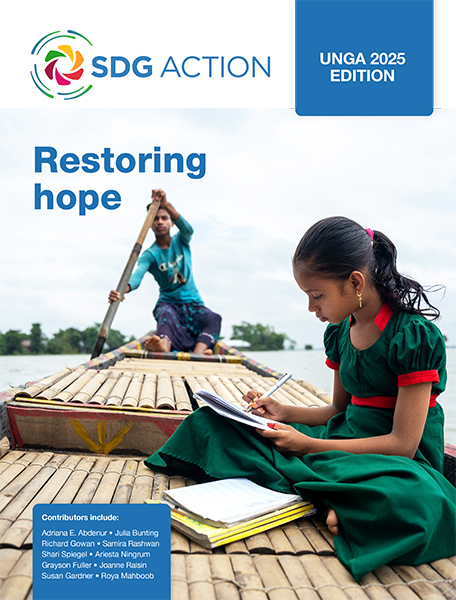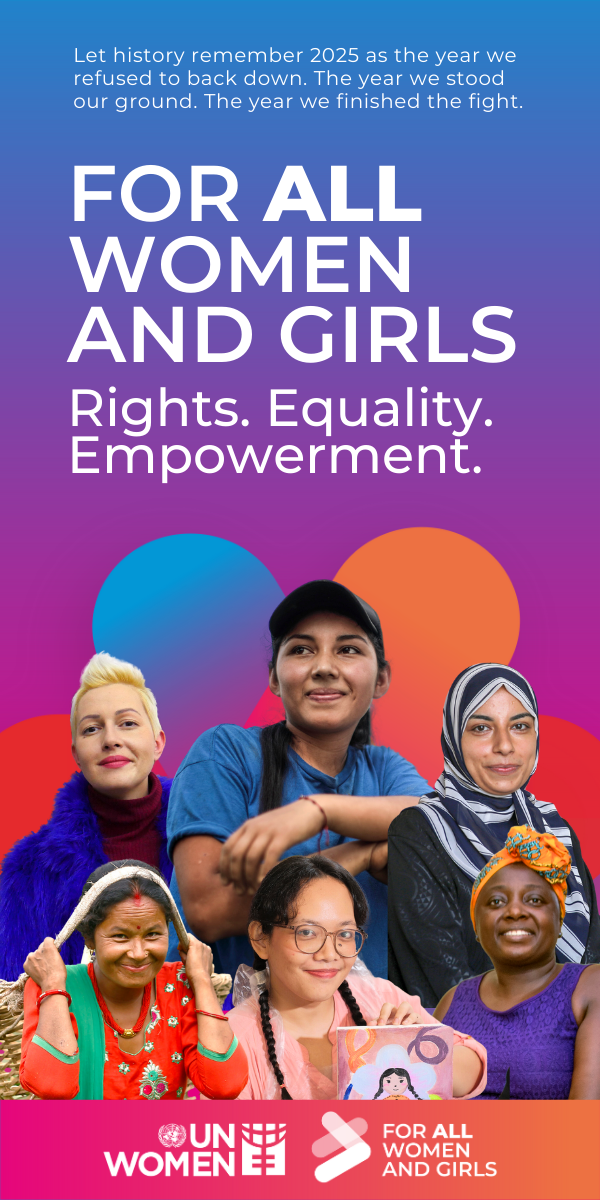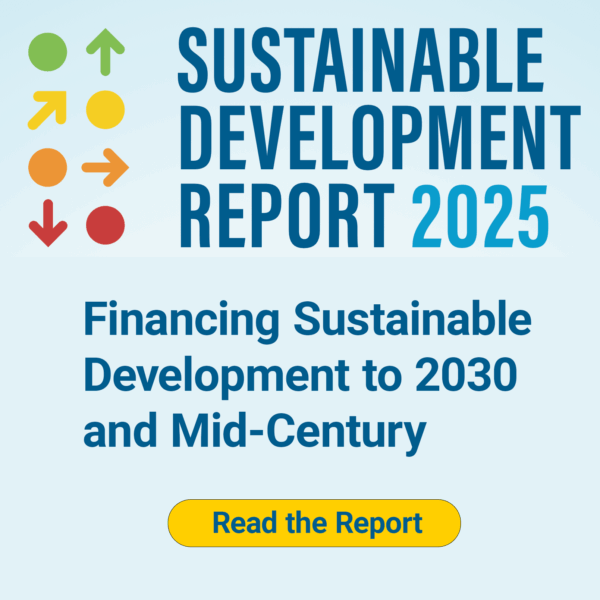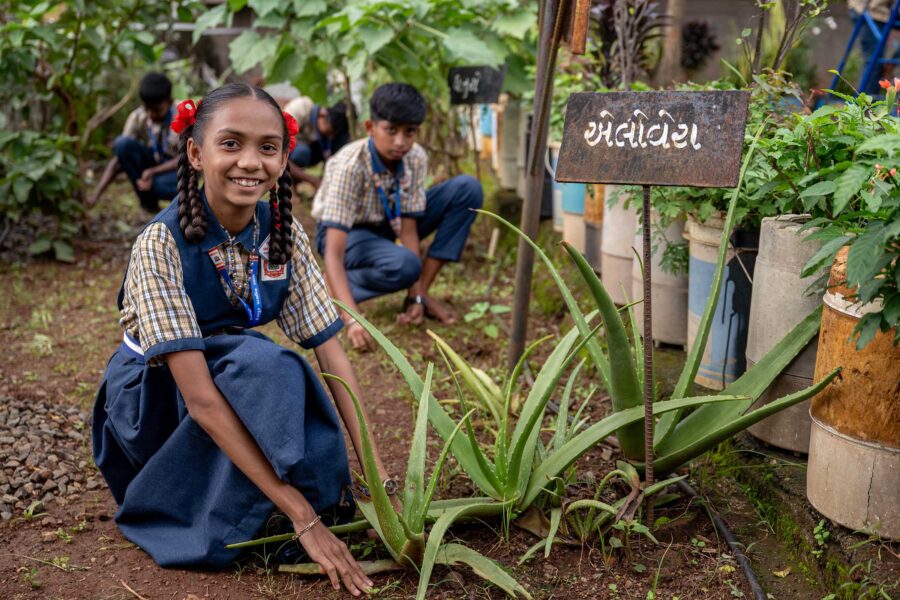Gender-responsive social protection: a key to unlock progress across the SDGs
Social protection is a powerful – but underused – lever for gender equality and sustainable development. To get the SDGs back on track and close widening global gaps, governments must invest in inclusive systems that support women’s rights and needs at every stage of life
Gender — Global
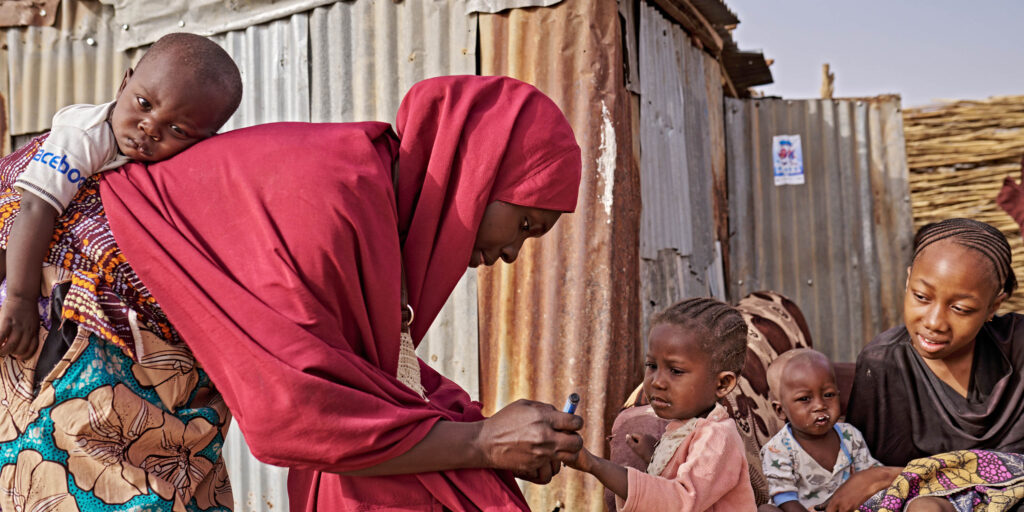
As the world approaches the 2030 finish line for the Sustainable Development Goals (SDGs), progress remains uneven – and in many areas, alarmingly off track. Amid the turbulence of global crises – from climate shocks to conflict and economic uncertainty – there’s a policy tool with significant transformative potential: gender-responsive and inclusive social protection. This raft of policies includes unemployment protection, maternity benefits, and access to affordable healthcare.
The promise: realizing women’s rights, transforming societies
According to UN Women’s new report Harnessing social protection for gender equality, resilience and transformation, greater investments in gender-responsive social protection could help put the global goals back on track by:
- providing basic income security across the life course (SDG 1)
- stabilizing access to food and nutrition (SDG 2)
- contributing to universal health coverage, access to sexual and reproductive health services, and reduced maternal mortality (SDG 3)
- promoting girls’ education and lifelong learning (SDG 4)
- recognizing unpaid care and domestic work and supporting more equal sharing of responsibilities for its provision (SDG 5)
- realizing the promise of decent work, particularly for women and youth (SDG 8)
- fostering solidarity and redistribution to reduce inequalities within and between countries (SDG 10)
- cushioning the impact of climate-related disasters and bolstering adaptation and mitigation efforts (SDG 13)
- reinvigorating broken social contracts for more peaceful and inclusive societies (SDG 16)
In other words, inclusive, gender-responsive social protection systems don’t just prevent poverty – they have positive ripple effects for a range of social and economic outcomes. When combined with gender-responsive employment policies and access to public services like education, health, childcare, and long-term care, social protection can provide women with sustainable pathways out of poverty and help transform societies toward sustainability, equality, and social justice.
The reality: persistent gender gaps and biases
Despite rising global social protection coverage, however, large gender gaps persist. In 2023, for the first time, more than half of the global population was covered by at least one form of social protection, with significantly higher rates among men (54.6%) compared with women (50.1%). What is more, gender gaps in social protection coverage have widened in most developing regions, suggesting that recent gains have benefited men more than women. As a result, an estimated 2 billion women and girls remain entirely unprotected – without access to basic income support when they become mothers, fall ill, lose their jobs, or grow old.
Even where women have some coverage, benefits are often inadequate, and fail to respect their rights and meet their needs. Take the wave of social protection measures that many countries adopted in the wake of the 2022 cost-of-living crisis: of the nearly 1,000 policy actions introduced across 171 countries, only 18% targeted women’s economic security, and just 3% addressed unpaid care.
The path forward: five priorities for action
Centering the dignity, agency, and empowerment of women and girls at every stage – from policy and program design to delivery and implementation – is critical to harnessing the transformative potential of social protection. UN Women’s new report provides key insights and promising examples of how this can be done.
1. Close gender gaps in routine systems
A first critical step is making routine social protection systems more inclusive of the world’s 740 million women in informal employment – including those in feminized occupations such as domestic services or market trading.
In Mexico, a 2018 Supreme Court ruling mandated social security for domestic workers. Between 2020 and 2022, registered workers doubled, giving them access to healthcare, unemployment benefits, pensions, childcare services, and more.
Social protection policies also must do more to recognize and support women’s disproportionate responsibility for unpaid care and domestic work across the life course. In Mongolia, maternity benefits now cover all women, regardless of their employment status or nationality – including herders and informal workers. Paternity leave was expanded too, promoting shared caregiving.
2. Make crisis responses work for women
Social protection becomes particularly urgent in times of crisis. As the climate emergency intensifies, some countries are taking promising steps.
In Northern Senegal, women farmers whose livelihoods have been profoundly impacted by climate change raised the need for health insurance and paid sick leave to reduce the income losses they incur when spending time away from work to care for themselves or sick family members. In response, the national health insurance scheme has extended and adapted its services, resulting in over 1,300 rural women gaining access to health insurance for the first time, covering themselves and nearly 7,000 household members.
Linking humanitarian aid and social protection systems – especially by partnering with women-led organizations – can improve reach, relevance, and resilience during conflict and crisis.
3. Integrate with public services and employment policies
Social protection doesn’t work in isolation. To be truly transformative, it must be linked to quality public services and decent employment – especially in the care economy.
In the Dominican Republic, the Supérate cash transfer now includes community-based care services as well as extra support for survivors of gender-based violence through cash, skills, and jobs.
Gender-responsive school feeding programs can also yield triple dividends: improving girls’ education and nutrition, while creating decent jobs for women. In Cambodia, women now serve as formalized food suppliers and school cooks.
Investment in the care economy – education, health, childcare, and elder care – could generate 300 million jobs globally by 2035. These are low-carbon jobs, predominantly held by women, and essential for a just, inclusive transition. Countries like Cape Verde, Kenya, Singapore, and Uruguay are leading the way in developing integrated care systems.
4. Prioritize women’s agency in delivery systems
The design of social protection means little without effective delivery. Unfortunately, women face significant barriers here too – from digital exclusion to discriminatory norms.
Digital payments may seem efficient, but many women lack access to phones, internet, or digital literacy. That’s where frontline workers and community organizations play a crucial role. In Argentina, during COVID-19, local workers ensured women received digital family emergency income support – reaching nearly nine million informal workers.
But those delivering benefits also need support. In Uganda, cash and in-kind transfers helped women health workers cope with risks in conflict zones. In Brazil, universal health reforms improved conditions and wages for community health workers – many of them women.
Empowering women as both recipients and providers of social protection builds trust and accountability from the ground up.
5. Fill the USD 1.4 trillion financing gap
The current global shortfall for basic social protection in low and middle-income countries is USD 1.4 trillion annually – or 3.3% of their combined GDP. But the returns far outweigh the costs. This year, the Fourth International Conference on Financing for Development and the Second World Summit for Social Development are two pivotal moments to agree on policies that will help close both financing and coverage gaps.
At the national level, a new generation of fiscal pacts is needed to deliver long-term, sustainable financing for gender equality, sustainability, and social justice by increasing both tax revenue and the progressivity of social security and tax systems.
At the global level, we need urgent reforms to ensure that social spending is not crowded out by spiraling debt interest payments, tax evasion, and avoidance. Official Development Assistance to support social protection system strengthening also needs to be increased – or at least protected against ongoing cuts.
Conclusion
Gender-responsive social protection isn’t charity – it’s an investment in shared prosperity. With only five years left to achieve the SDGs, it offers a clear, evidence-backed pathway to accelerate progress.
Featured in:
UNGA 2025 edition: Restoring hope
An effective multilateral response is needed for an ever increasing number of crises. At the same time, the UN – the heart of the multilateral system for 80 years – is under attack from nations trying to defund and disempower it. Radical reform is clearly needed. Whatever form that takes, it should be guided by and designed to support the SDGs.
This edition considers the impacts of inequality and conflict, and explores ways to build a fairer, safer future through education, technology, economic development and global partnerships.
Authors include Adriana E. Abdenur, Julia Bunting, Richard Gowan, Samira Rashwan, Shari Spiegel, Ariesta Ningrum, Grayson Fuller, Joanne Raisin, Susan Gardner and Roya Mahboob.
Publication date: 22 September 2025

